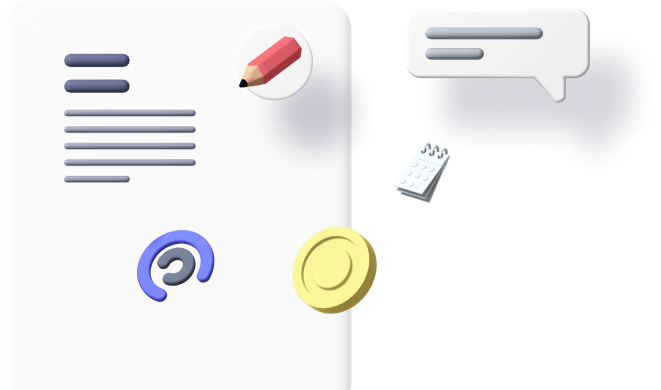
Manmeet Singh
- October 16, 2024
- 7 min read
- Marketing Automation
- Blog
I. Introduction
II. Understanding Inbound Marketing
III. The Role of HubSpot in Inbound Marketing
IV. Mastering Content Creation for Inbound Success
V. Optimizing SEO for Lead Generation
VI. Leveraging Social Media for Maximum Engagement
VII. Driving Conversions with Email Marketing
VIII. Perfecting Lead Nurturing and Scoring
IX. Building High-Converting Landing Pages and CTAs
X. Harnessing the Power of Analytics and Reporting
XI. Utilizing CRM for Streamlined Lead Management
XII. Best Practices for Inbound Marketing with HubSpot
XIII. The Future of Inbound Marketing with HubSpot
XIV. Conclusion
I. Introduction
In today’s competitive digital landscape, generating leads is more important than ever. Inbound marketing—a strategy focused on attracting customers through relevant and valuable content—has emerged as a key approach. At the heart of many successful inbound campaigns is HubSpot, a platform offering powerful tools to drive engagement and generate high-quality leads.
II. Understanding Inbound Marketing
What is Inbound Marketing?
Inbound marketing is all about creating value. Instead of using disruptive tactics like cold calls, it draws in prospects with useful content, educational resources, and personalized experiences. The goal is to guide visitors through the buyer’s journey—from awareness to consideration and, eventually, conversion.
Key Elements of Inbound Marketing:
• Content marketing (blogs, eBooks, webinars)
• Search engine optimization (SEO)
• Social media engagement
• Email marketing and lead nurturing
Why Inbound Marketing Matters for Lead Generation
Inbound marketing targets individuals who are actively looking for solutions. By addressing their pain points and offering tailored solutions, you can attract leads more effectively than traditional outbound tactics.
III. The Role of HubSpot in Inbound Marketing
Why Choose HubSpot?
HubSpot is a go-to platform for inbound marketing because it consolidates multiple tools into one software, simplifying processes like automation, lead tracking, and reporting. This makes it invaluable for businesses focused on generating and nurturing leads.
HubSpot Features for Lead Generation:
• Content Management System (CMS)
• SEO optimization tools
• Social media scheduling and analytics
• Email marketing automation
• Lead nurturing and scoring tools
• Comprehensive analytics dashboard
IV. Mastering Content Creation for Inbound Success
- Creating High-Quality Content: Content is the foundation of inbound marketing. HubSpot simplifies content creation, optimization, and distribution, whether you’re crafting blog posts, eBooks, or guides.
- HubSpot’s Content Optimization Tool: This tool ensures your content is search-engine-friendly and geared toward lead generation, providing suggestions to boost your content’s visibility.
V. Optimizing SEO for Lead Generation
- HubSpot’s SEO Tools: HubSpot offers powerful SEO tools to improve your content’s ranking in search engines. From keyword research to optimization tips, these tools help drive organic traffic and generate leads.
- Building SEO-Friendly Landing Pages: HubSpot’s landing page builder lets you create engaging, high-converting pages optimized for search engines, helping convert visitors into leads.
VI. Leveraging Social Media for Maximum Engagement
- Managing Social Media with HubSpot: Social media is a crucial channel for inbound marketing, and HubSpot allows you to manage and schedule posts across multiple platforms. This ensures consistent engagement and helps you track which platforms drive the most interaction.
- Engaging Prospects on Social Channels: HubSpot tracks social media interactions, giving you valuable insights into which platforms and posts resonate most with your audience, allowing for more targeted engagement.
VII. Driving Conversions with Email Marketing
- Crafting Personalized Emails: Personalization is key to successful email marketing. HubSpot’s email tools allow you to create tailored messages that speak directly to your audience’s interests and needs.
- Automating Lead Nurturing: HubSpot’s automation tools help streamline your email marketing campaigns by sending targeted messages to leads based on their behaviors, improving lead nurturing and conversions.
VIII. Perfecting Lead Nurturing and Scoring
- Understanding Lead Scoring: Lead scoring helps prioritize leads based on their engagement levels and likelihood to convert. HubSpot’s lead scoring features ensure you focus on the most promising leads.
- Automating the Lead Nurturing Process: HubSpot’s workflows allow you to automate the nurturing process, ensuring each lead receives the right content at the right time, improving the chances of conversion.
IX. Building High-Converting Landing Pages and CTAs
- Creating Effective Landing Pages: HubSpot’s landing page builder is designed to help you create pages optimized for conversion, whether your goal is lead capture or moving prospects further down the funnel.
- Designing Compelling Calls-to-Action (CTAs): CTAs are essential for conversions, and HubSpot’s CTA tools make it easy to design eye-catching buttons that encourage visitors to take the next step.
X. Harnessing the Power of Analytics and Reporting
- Tracking Campaign Performance: HubSpot’s analytics tools allow you to monitor every aspect of your marketing campaigns, from email open rates to website traffic. This data-driven approach ensures you’re always optimizing your lead generation efforts.
- Adjusting Strategies Based on Data: Regularly reviewing analytics allows you to make informed decisions and fine-tune your inbound marketing strategies for better results.
XI. Utilizing CRM for Streamlined Lead Management
- HubSpot CRM for Lead Management: HubSpot’s CRM offers detailed insights into every interaction with your leads, helping you personalize outreach and improve conversion rates.
- Aligning Marketing with Sales: HubSpot integrates marketing and sales, providing a seamless flow of information between the two departments and ensuring that leads are handled efficiently.
XII. Best Practices for Inbound Marketing with HubSpot
- Avoiding Common Pitfalls: While HubSpot offers powerful tools, avoid relying too heavily on automation or neglecting to update your content regularly. Balance is key.
- Maximizing HubSpot’s Potential: To fully leverage HubSpot, integrate all aspects of your inbound marketing—from content creation to lead nurturing—to create a cohesive strategy that drives results.
XIII. The Future of Inbound Marketing with HubSpot
- Emerging Trends: As AI and machine learning advance, HubSpot continues to incorporate these technologies, offering more personalized and efficient inbound marketing solutions.
- HubSpot’s Evolving Platform: HubSpot regularly updates its platform to stay ahead of industry trends, ensuring marketers have the tools they need to stay competitive and generate leads effectively.
XIV. Conclusion
Inbound marketing is about providing value, and HubSpot is the perfect platform to help you do just that. By utilizing its tools and features, you can create a seamless lead generation strategy that delivers real results. Consistency, data analysis, and regular strategy adjustments are key to ongoing success. Start your email campaigns with Code & Peddle Today.
The following posts may interest you –
FAQs
Content marketing, SEO-optimized blogs, lead magnets with smart forms, behavior-based email workflows, and CRM-integrated CTAs are among the top-performing inbound strategies in HubSpot.
HubSpot streamlines the entire inbound process—from attracting visitors with blogs and SEO, to converting leads through forms, CTAs, and nurturing workflows—all tracked in one centralized CRM.
Yes. HubSpot offers scalable plans and free tools for small businesses to launch SEO blogs, capture leads, automate emails, and track conversions without large upfront investment.
High-converting formats include blog posts, case studies, landing pages, comparison guides, and gated assets like eBooks or webinars—all of which can be automated and measured via HubSpot.
Use a clear headline, value-driven copy, compelling CTA, short forms with progressive profiling, and personalized content modules to increase conversion rates.
















